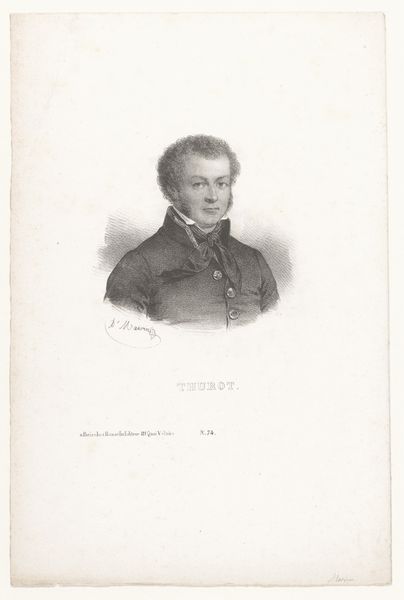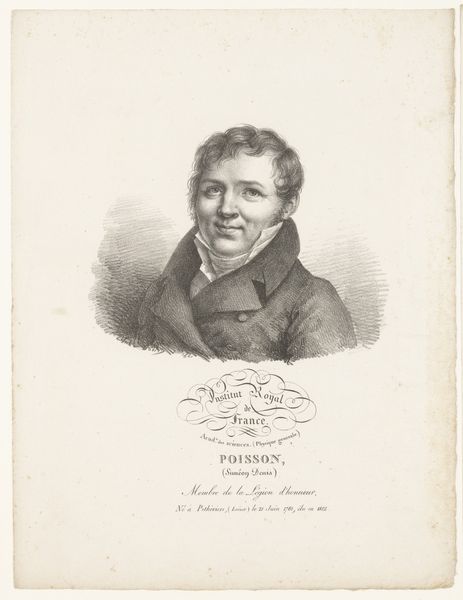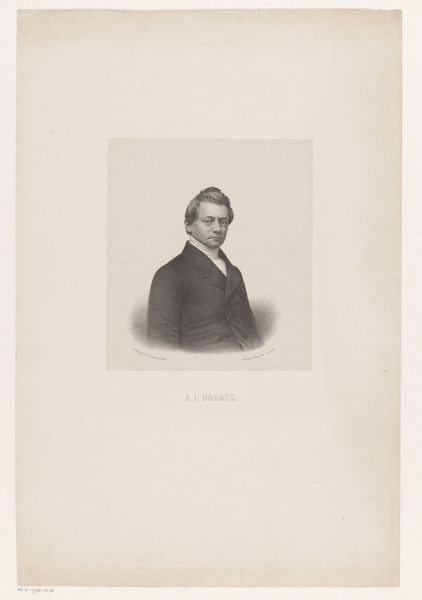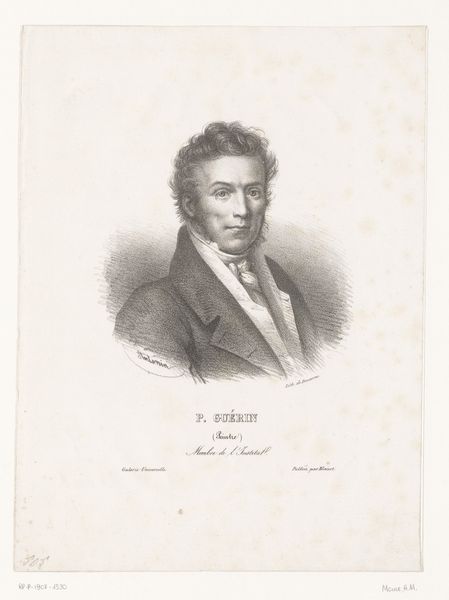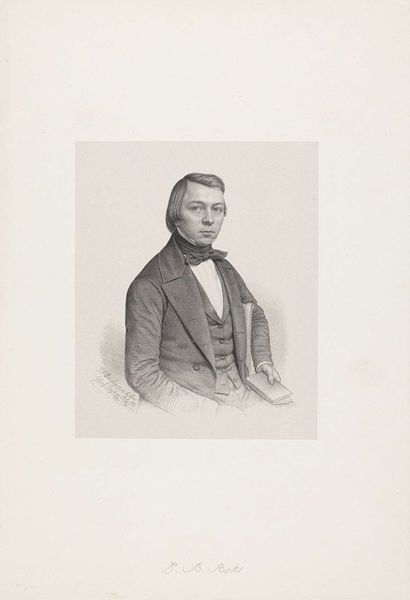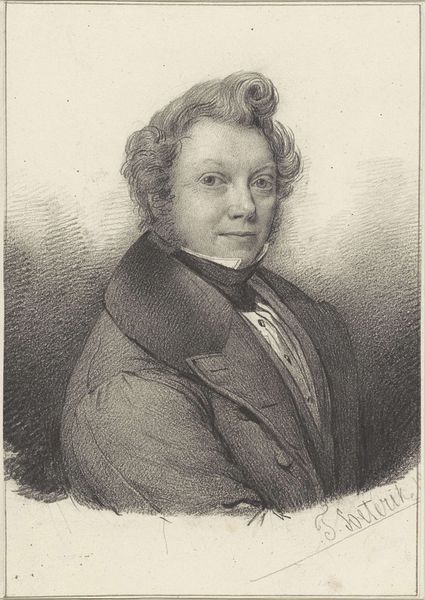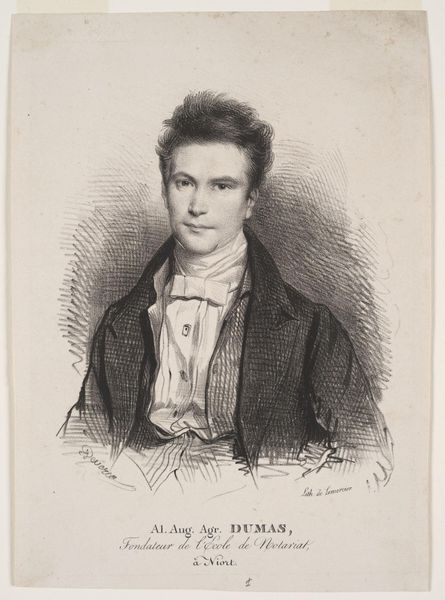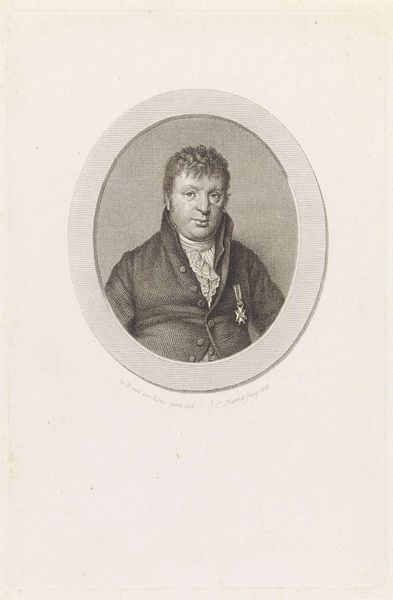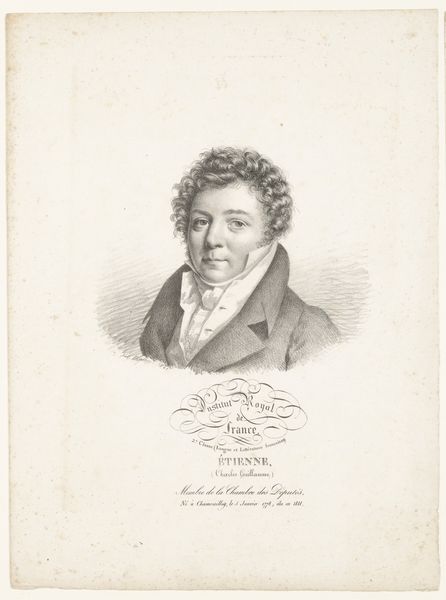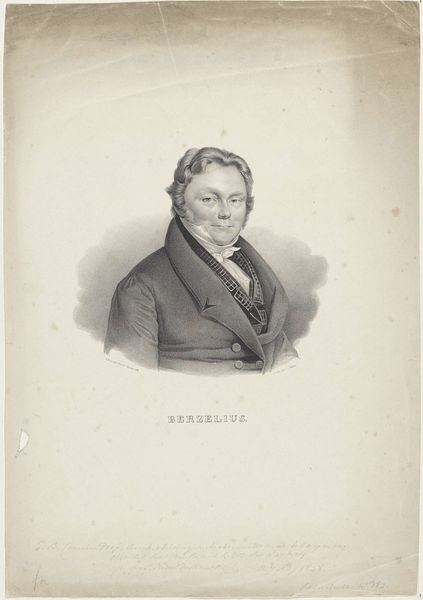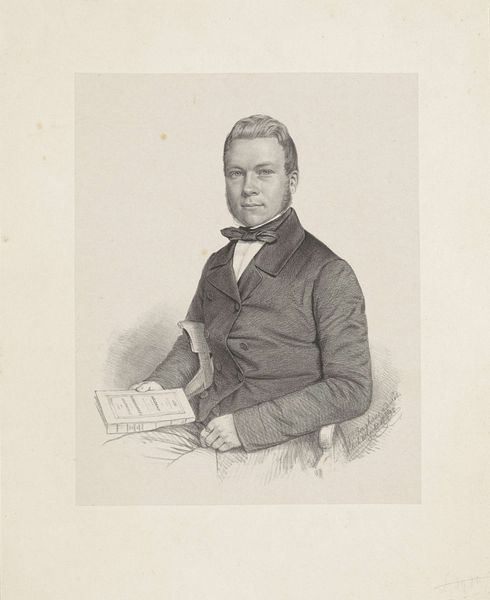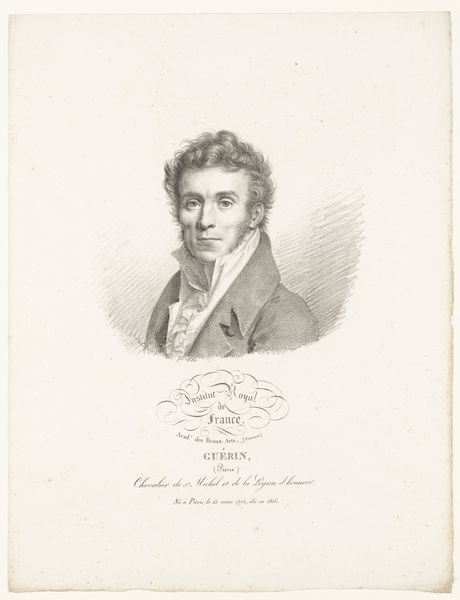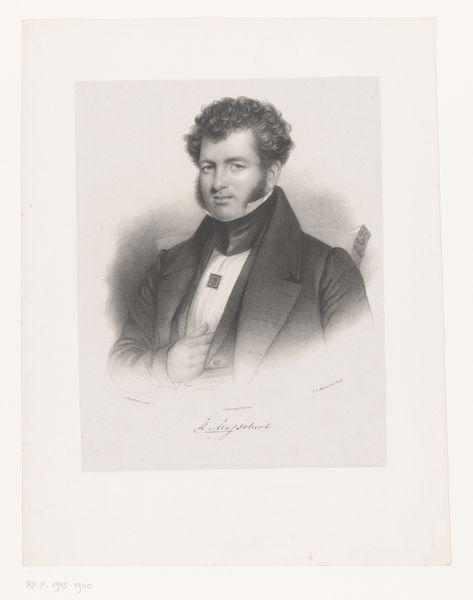
print, etching, graphite
#
portrait
#
16_19th-century
# print
#
etching
#
graphite
#
graphite
#
realism
Dimensions: height 405 mm, width 335 mm, height 365 mm, width 295 mm
Copyright: Rijks Museum: Open Domain
Editor: This is a portrait of Jacobus Cornelis Broers, made sometime between 1830 and 1890. It's an etching with graphite on paper, giving it a soft, almost dreamy quality. The man's expression seems serious, almost melancholic. What symbolic meaning do you see in the piece? Curator: The visual language employed speaks volumes about status and the desired public image. Consider the formal attire – the high collar, the dark coat. These aren’t just clothes; they are signifiers of respectability and societal position, meticulously chosen and rendered. Note the even lighting. What does it highlight? Editor: His face, mostly, and that immaculate collar. Curator: Exactly. The focus isn’t on elaborate surroundings or opulent displays of wealth but on the individual and, more precisely, on his intellect and moral character. Do you perceive any visual cues that suggest his profession or status? Editor: Well, the inscription at the bottom says "Med. Prof. Ord.," so, I suppose he was a professor of medicine? The serious demeanor also reinforces that image. Curator: Precisely. The portrait adheres to conventions of portraying intellectuals. There's a legacy of visual rhetoric at play. The print medium itself is important too. It allows for wider distribution and reinforces his importance and authority. What feelings does the imagery evoke for you? Editor: I see now how all the elements combine to portray a person of significance and intellect. Thanks; I see how each element adds to the overall impression of a learned and respected figure! Curator: And each careful etching helps create a cultural memory, one thread in the tapestry of that era. These aren't just pictures, they're encoded messages for future generations.
Comments
No comments
Be the first to comment and join the conversation on the ultimate creative platform.
